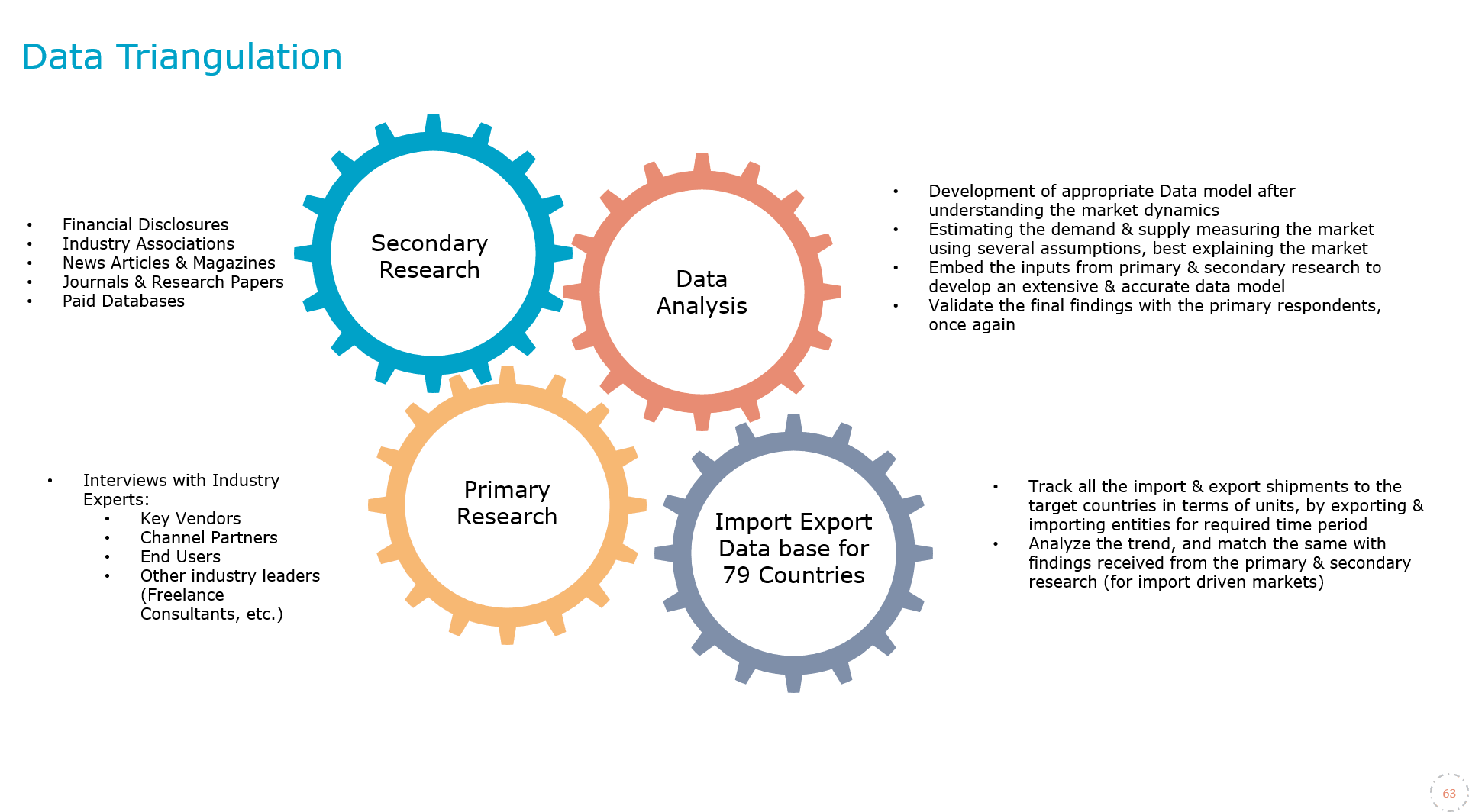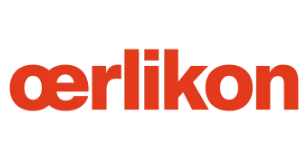
Global Flare Monitoring Market Research Report: Forecast (2025-2030)
Global Flare Monitoring Market Report - By Component (Hardware, (By Mounting Method, (Remote, (Infrared (IR) Flame Detectors, Multi-Spectrum Infrared (MSIR) Flame Detectors, Ultrav...iolet (UV) Flame Detectors, Single Infrared (IR) Flame Detectors, Visual Flame Detectors), In-Process, (Calorimeter, Spectrometer, Gas Chromatograph, Flow Meter, Gas Analyser), Software, Services))), By End-User (Refineries, Chemical and Petrochemical Plants, Natural-Gas Processing Plants, Offshore Exploration Platforms, Well Heads and Landfills, Metals and Steel Industry), By Deployment Location (On-shore, Off-shore), and Others Read more
- Energy
- Jan 2025
- Pages 237
- Report Format: PDF, Excel, PPT
Market Definition
Flaring is common in petrochemicals, refineries, steel plants, and other industries. It is the open-air burning of gases that are considered waste or unwanted. Methane makes up a large portion of these waste gases, and it is several times more harmful to the environment than CO2, which makes the process of flaring crucial. Flare monitoring is vital to this process to observe and evaluate emissions from flare stacks and maintain combustion efficiency to ensure a very low impact on the environment.
Market Insights & Analysis: Global Flare Monitoring Market (2025-30):
The Global Flare Monitoring Market size was valued at around USD 1.3 billion in 2023 & is estimated to reach around USD 2.5 billion by 2030. The market is also expected to grow at a CAGR of around 10.1% during the forecast period, i.e., 2025-30. Global Flare Monitoring Market growth is a result of the strict regulatory framework, increasing awareness and corporate social responsibility, technological advancement, and global industrial expansion.
Global Warming caused by the alarming levels of emissions has prompted governments around the globe to make efforts to curb high emission levels from industries by making the environmental regulations stricter, which made constant flare monitoring important to ensure compliance. Awareness regarding the harms of industrial emissions has also increased in recent years which instigated protests against environmental pollution caused by improper disposal of industrial waste and forced industries to improve their corporate social responsibility policies and lower the impact they have on the environment. This raised the need to monitor flare stacks to observe their combustion efficiency, fueling the growth of the flare monitoring industry.
| Report Coverage | Details |
|---|---|
| Historical Years | 2020–23 |
| Base Years | 2024 |
| Forecast Years | 2025–30 |
| Market Value in 2024 | USD 1.3 Billion |
| Market Value by 2030 | USD 2.5 Billion |
| CAGR (2025–30) | 10.1% |
| Leading Region | North America |
| Top Key Players | Zeeco, Ametek Land, Teledyne Flir, Providence Photonics, Extrel CMS, Emerson, Thermo Fisher Scientific Inc., Fluenta, Baker Hughes, Accuopt, ABB (Analytical Solution and Products), Williamson IR, Advanced Energy, MKS Instruments, Hikvision, and others |
| Segmentation | By Component (Hardware, (By Mounting Method, (Remote, (Infrared (IR) Flame Detectors, Multi-Spectrum Infrared (MSIR) Flame Detectors, Ultraviolet (UV) Flame Detectors, Single Infrared (IR) Flame Detectors, Visual Flame Detectors), In-Process, (Calorimeter, Spectrometer, Gas Chromatograph, Flow Meter, Gas Analyser), Software, Services))), By End-User (Refineries, Chemical and Petrochemical Plants, Natural-Gas Processing Plants, Offshore Exploration Platforms, Well Heads and Landfills, Metals and Steel Industry), By Deployment Location (On-shore, Off-shore), and Others |
| Key Report Highlights |
|
*Boost strategic growth with in-depth market analysis - Get a free sample preview today!
Moreover, technological advancement and the introduction of IoT and data analysis have made monitoring much easier. Flare monitoring does not require constant attention and can work using AI and cloud services. Besides, improvements in remote monitoring systems have increased their popularity as they are easy to maintain and reduce the downtime faced in maintaining the in-process monitoring systems, as operations must be stopped to change the equipment in the flare stack. Additionally, the constant industrial growth all over the globe has paved a path for constant demand for monitoring systems. Petrochemical plants, refineries, the steel industry, etc. are growing at a constant pace, and with this, the demand for flare monitoring systems will consistently grow during the forecast period.
Global Flare Monitoring Market Driver:
Strict Regulations Driving Market Growth – Global warming and climate change have been a growing concern for the world, and industrial emissions are a significant contributor to pollution and greenhouse gases which are the main cause of global warming. This instigated various debates and protests against the inappropriate disposal of industrial waste in the environment. Prompted by the reports from environmental agencies and international organizations, governments around the globe made the regulatory framework surrounding industrial emissions stricter, to lower the emissions and the negative impacts of industrial growth on the environment. Strict regulations nudged the industries to dispose of the gases more responsibly, which requires constant monitoring of emissions from flare stacks, increasing the demand for monitoring equipment, which uses various technologies to observe the combustion efficiency to ensure the gases are properly burnt before releasing into the environment.

Global Flare Monitoring Market Opportunity:
Increasing Awareness & Corporate Social Responsibility – Increasing awareness about the harm caused by industrial emissions among people and their demand for transparency of industrial emissions data have forced companies to adopt more sustainable practices & make efforts to minimize their impact on the environment and include sustainability into their corporate social responsibility policies. Companies are determined to display their commitment to decreasing their footprint to maintain their reputation and acceptance in the market, driving them to optimize their operations to reduce waste and monitor their flare stacks to collect data for their emissions. This can be opportunistic for the Global Flare Monitoring Market. As companies grow more aware of the importance of sustainability and make efforts via their corporate social initiatives, the market for flare monitoring systems will grow.
Global Flare Monitoring Market Challenge:
Complex Regulatory Norms & Standards Hindering Market Growth – Regulations limiting flare emissions are complex and strict. Moreover, they are constantly updated and vary by location and country. Meeting these regulatory norms and standards can be a significant challenge for businesses. Organizations must ensure that their flare-monitoring system matches the current mandated requirements and is up to the standards to comply with environmental regulations, local and international. Also, keeping up with the updates is crucial to stay in compliance. Moreover, installing the right equipment for flare monitoring is of significance from a financial standpoint as well. Flare monitoring equipment such as infrared imagers are expensive and are usually deployed in harsh conditions and replacing them can be considerably expensive and can hinder the operations or result in downtime incurring loss for an organization.
Global Flare Monitoring Market Trend:
Increasing Integration of Data Analytics & Automation – Integration of data analytics is transforming the way flare stacks are monitored. With constantly evolving technology and the introduction of flare-monitoring equipment with advanced sensors that can continually detect a variety of flare characteristics such as combustion efficiency, flame stability, heat release, gas flow, etc. with high precision, data analytics makes flare monitoring much more efficient. With sensors providing a pool of real-time data, modern data analytics tools can give real-time insights into flare performance such as combustion efficiency, flame stability, and heat release. Additionally, remote monitoring’s increased popularity and automation of monitoring systems with IoT and cloud-based services, make flare monitoring significantly easier. Modern flare monitoring systems are often automated, and monitoring can be done from anywhere without the need for a man on site.
Global Flare Monitoring Market (2025-30): Segmentation Analysis
The Global Flare Monitoring Market study of MarkNtel Advisors evaluates & highlights the major trends and influencing factors in each segment. It includes predictions for the period 2025–2030 at the global level. Based on the analysis, the market has been further classified as:
Based on Component:
- Hardware
- Software
- Services
Based on the component, the hardware segment holds the largest share of the Fare Monitoring Industry on a global scale. The dominance of this segment is due to the wider acceptability of its sub-component remote mounting method. The hardware segment is divided into Remote and In-process mounting methods, out of which remote holds a larger share. Remote flare monitoring methods are getting more popular as the reliability and accuracy of the equipment increases. Imagers and sensors are getting more advanced and can observe and report more flare characteristics. Modern flare monitors can be automated using IoT and cloud-based services and can be integrated with advanced data analytics tools. With automation and integration of data analytics, useful real-time insights can be obtained without being present on-site, making flare monitoring much more efficient and precise.
Moreover, remote flare monitoring is more practical and cost-efficient for companies. Remote flare monitoring systems are relatively easier to maintain than the in-process monitoring systems as they a deployed at a distance from the flare, making it easier to perform maintenance tasks without causing downtime for the company. The non-invasive nature of remote flare monitoring systems makes it possible to separate the monitoring operations from plant operations. Additionally, remote systems do not need to be replaced frequently as the in-process system requires. The in-process system is deployed in corrosive or hazardous conditions, often causing the failure of equipment.
Based on End-User:
- Refineries
- Chemical and Petrochemical Plants
- Natural-Gas Processing Plants
- Offshore Exploration Platforms
- Well Heads and Landfills
- Metals and Steel Industry
Out of these refineries segment is the largest end-user of the Global Flare Monitoring Market. This is due to the strict regulations surrounding the industries working with petroleum products. Refining petroleum products releases harmful gases which are to be disposed of safely. Thus, large investments are made into flare monitoring to ensure optimum flare performance and safe disposal of gases. Failing to which would not only harm the environment but also attract hefty fines. Additionally, data from flare monitoring such as gas composition, and gas flow can help companies optimize their process and improve efficiency to minimize waste.
Global Flare Monitoring Market (2025-30): Regional Projections
Geographically, the Global Flare Monitoring Market expands across:
- North America
- South America
- Europe
- The Middle East & Africa
- Asia-Pacific
Out of all the regions North America dominates the Global Flare Monitoring Market. North America has strict regulations regarding industrial emissions and high industrial activity in the oil and gas sector where flaring is crucial for safety and regulatory compliance. North American countries such as The USA and Canada boast a well-established infrastructure and heavy investments in technology and innovation, which drives the market development. The government and environmental agencies have imposed strict regulations on industries that require companies to use advanced flare-monitoring systems. North America is expected to hold the largest share of the Global Flare Monitoring Market during the forecast period as well because the oil and gas sector is undergoing a structural transformation, updating facilities to improve operations and safety, this will create opportunities for market players.
Global Flare Monitoring Industry Recent Development:
- April 2024: The VISR method developed by Providence Photonics for flare compliance monitoring has been published by the EPA as method OTM-56. the U.S. EPA has published Other Test Method 56 (OTM-56) for monitoring flare regulatory compliance parameter NHVcz (or NHVdil for perimeter air-assisted flares). This is a significant milestone because there has been no EPA method for flare efficiency monitoring other than procedures specified in recent flare regulations.
Gain a Competitive Edge with Our Global Flare Monitoring Market Report
- Global Flare Monitoring Market Report by MarkNtel Advisors provides a detailed & thorough analysis of market size & share, growth rate, competitive landscape, and key players. This comprehensive analysis helps businesses gain a holistic understanding of the market dynamics & make informed decisions.
- This report also highlights current market trends & future projections, allowing businesses to identify emerging opportunities & potential challenges. By understanding market forecasts, companies can align their strategies & stay ahead of the competition.
- Global Flare Monitoring Market Report aids in assessing & mitigating risks associated with entering or operating in the market. By understanding market dynamics, regulatory frameworks, and potential challenges, businesses can develop strategies to minimize risks & optimize their operations.
Frequently Asked Questions
- Market Segmentation
- Introduction
- Product Definition
- Research Process
- Assumptions
- Executive Summary
- Global Flare Monitoring Market Trends & Development
- Global Flare Monitoring Market Dynamics
- Drivers
- Challenges
- Global Flare Monitoring Market Regulations, Policies & Standards
- Global Flare Monitoring Market Hotspot & Opportunities
- Global Flare Monitoring Market Analysis, 2019-2030F
- Market Size & Analysis
- Revenues (USD Million)
- Market Share & Analysis
- By Component
- Hardware
- By Mounting Method
- Remote
- Infrared (IR) Flame Detectors- Market Size & Forecast 2019-2030F, (USD million)
- Multi-Spectrum Infrared (MSIR) Flame Detectors- Market Size & Forecast 2019-2030F, (USD million)
- Ultraviolet (UV) Flame Detectors- Market Size & Forecast 2019-2030F, (USD million)
- Single Infrared (IR) Flame Detectors- Market Size & Forecast 2019-2030F, (USD million)
- Visual Flame Detectors- Market Size & Forecast 2019-2030F, (USD million)
- In-Process
- Calorimeter- Market Size & Forecast 2019-2030F, (USD million)
- Spectrometer- Market Size & Forecast 2019-2030F, (USD million)
- Gas Chromatograph- Market Size & Forecast 2019-2030F, (USD million)
- Flow Meter- Market Size & Forecast 2019-2030F, (USD million)
- Gas Analyser- Market Size & Forecast 2019-2030F, (USD million)
- Remote
- By Mounting Method
- Software- Market Size & Forecast 2019-2030F, (USD million)
- Services- Market Size & Forecast 2019-2030F, (USD million)
- Hardware
- By End-User
- Refineries- Market Size & Forecast 2019-2030F, (USD million)
- Chemical and Petrochemical Plants- Market Size & Forecast 2019-2030F, (USD million)
- Natural-Gas Processing Plants- Market Size & Forecast 2019-2030F, (USD million)
- Offshore Exploration Platforms- Market Size & Forecast 2019-2030F, (USD million)
- Well Heads and Landfills- Market Size & Forecast 2019-2030F, (USD million)
- Metals and Steel Industry- Market Size & Forecast 2019-2030F, (USD million)
- By Deployment Location
- On-shore- Market Size & Forecast 2019-2030F, (USD million)
- Off-shore- Market Size & Forecast 2019-2030F, (USD million)
- By Region
- North America
- South America
- Europe
- The Middle East & Africa
- Asia-Pacific
- By Company
- Competition Characteristics
- Market Share of Leading Companies
- By Component
- Market Size & Analysis
- North America Flare Monitoring Market Analysis, 2019-2030F
- Market Size & Analysis
- Revenues (USD Million)
- Market Share & Analysis
- By Mounting Method- Market Size & Forecast 2019-2030F, (USD million)
- By End-User- Market Size & Forecast 2019-2030F, (USD million)
- By Country
- The US
- Canada
- Mexico
- The US Flare Monitoring Market Analysis, 2019-2030F
- Market Size & Analysis
- Revenues (USD Million)
- Market Share & Analysis
- By Mounting Method- Market Size & Forecast 2019-2030F, (USD million)
- Market Size & Analysis
- Canada Flare Monitoring Market Analysis, 2019-2030F
- Market Size & Analysis
- Revenues (USD Million)
- Market Share & Analysis
- By Mounting Method- Market Size & Forecast 2019-2030F, (USD million)
- Market Size & Analysis
- Mexico Flare Monitoring Market Analysis, 2019-2030F
- Market Size & Analysis
- Revenues (USD Million)
- Market Share & Analysis
- By Mounting Method- Market Size & Forecast 2019-2030F, (USD million)
- Market Size & Analysis
- Market Size & Analysis
- South America Flare Monitoring Market Analysis, 2019-2030F
- Market Size & Analysis
- Revenues (USD Million)
- Market Share & Analysis
- By Mounting Method- Market Size & Forecast 2019-2030F, (USD million)
- By End-User- Market Size & Forecast 2019-2030F, (USD million)
- By Country
- Brazil
- Argentina
- Rest of South America
- Brazil Flare Monitoring Market Analysis, 2019-2030F
- Market Size & Analysis
- Revenues (USD Million)
- Market Share & Analysis
- By Mounting Method- Market Size & Forecast 2019-2030F, (USD million)
- Market Size & Analysis
- Argentina Flare Monitoring Market Analysis, 2019-2030F
- Market Size & Analysis
- Revenues (USD Million)
- Market Share & Analysis
- By Mounting Method- Market Size & Forecast 2019-2030F, (USD million)
- Market Size & Analysis
- Market Size & Analysis
- Europe Flare Monitoring Market Analysis, 2019-2030F
- Market Size & Analysis
- Revenues (USD Million)
- Market Share & Analysis
- By Mounting Method- Market Size & Forecast 2019-2030F, (USD million)
- By End-User- Market Size & Forecast 2019-2030F, (USD million)
- By Country
- The UK
- Germany
- France
- Italy
- Spain
- Rest of Europe
- The UK Flare Monitoring Market Analysis, 2019-2030F
- Market Size & Analysis
- Revenues (USD Million)
- Market Share & Analysis
- By Mounting Method- Market Size & Forecast 2019-2030F, (USD million)
- Market Size & Analysis
- Germany Flare Monitoring Market Analysis, 2019-2030F
- Market Size & Analysis
- Revenues (USD Million)
- Market Share & Analysis
- By Mounting Method- Market Size & Forecast 2019-2030F, (USD million)
- Market Size & Analysis
- France Flare Monitoring Market Analysis, 2019-2030F
- Market Size & Analysis
- Revenues (USD Million)
- Market Share & Analysis
- By Mounting Method- Market Size & Forecast 2019-2030F, (USD million)
- Market Size & Analysis
- Italy Flare Monitoring Market Analysis, 2019-2030F
- Market Size & Analysis
- Revenues (USD Million)
- Market Share & Analysis
- By Mounting Method- Market Size & Forecast 2019-2030F, (USD million)
- Market Size & Analysis
- Spain Flare Monitoring Market Analysis, 2019-2030F
- Market Size & Analysis
- Revenues (USD Million)
- Market Share & Analysis
- By Mounting Method- Market Size & Forecast 2019-2030F, (USD million)
- Market Size & Analysis
- Market Size & Analysis
- The Middle East & Africa Flare Monitoring Market Analysis, 2019-2030F
- Market Size & Analysis
- Revenues (USD Million)
- Market Share & Analysis
- By Mounting Method- Market Size & Forecast 2019-2030F, (USD million)
- By End-User- Market Size & Forecast 2019-2030F, (USD million)
- By Country
- Saudi Arabia
- The UAE
- South Africa
- Rest of the Middle East & Africa
- Saudi Arabia Flare Monitoring Market Analysis, 2019-2030F
- Market Size & Analysis
- Revenues (USD Million)
- Market Share & Analysis
- By Mounting Method- Market Size & Forecast 2019-2030F, (USD million)
- Market Size & Analysis
- The UAE Flare Monitoring Market Analysis, 2019-2030F
- Market Size & Analysis
- Revenues (USD Million)
- Market Share & Analysis
- By Mounting Method- Market Size & Forecast 2019-2030F, (USD million)
- Market Size & Analysis
- South Africa Flare Monitoring Market Analysis, 2019-2030F
- Market Size & Analysis
- Revenues (USD Million)
- Market Share & Analysis
- By Mounting Method- Market Size & Forecast 2019-2030F, (USD million)
- Market Size & Analysis
- Market Size & Analysis
- Asia Pacific Flare Monitoring Market Analysis, 2019-2030F
- Market Size & Analysis
- Revenues (USD Million)
- Market Share & Analysis
- By Mounting Method- Market Size & Forecast 2019-2030F, (USD million)
- By End-User- Market Size & Forecast 2019-2030F, (USD million)
- By Country
- China
- Japan
- India
- South Korea
- Australia
- Rest of Asia Pacific
- China Flare Monitoring Market Analysis, 2019-2030F
- Market Size & Analysis
- Revenues (USD Million)
- Market Share & Analysis
- By Mounting Method- Market Size & Forecast 2019-2030F, (USD million)
- Market Size & Analysis
- Japan Flare Monitoring Market Analysis, 2019-2030F
- Market Size & Analysis
- Revenues (USD Million)
- Market Share & Analysis
- By Mounting Method- Market Size & Forecast 2019-2030F, (USD million)
- Market Size & Analysis
- India Flare Monitoring Market Analysis, 2019-2030F
- Market Size & Analysis
- Revenues (USD Million)
- Market Share & Analysis
- By Mounting Method- Market Size & Forecast 2019-2030F, (USD million)
- Market Size & Analysis
- South Korea Flare Monitoring Market Analysis, 2019-2030F
- Market Size & Analysis
- Revenues (USD Million)
- Market Share & Analysis
- By Mounting Method- Market Size & Forecast 2019-2030F, (USD million)
- Market Size & Analysis
- Australia Flare Monitoring Market Analysis, 2019-2030F
- Market Size & Analysis
- Revenues (USD Million)
- Market Share & Analysis
- By Mounting Method- Market Size & Forecast 2019-2030F, (USD million)
- Market Size & Analysis
- Market Size & Analysis
- Global Flare Monitoring Market Strategic Imperatives for Success & Growth
- Competitive Outlook
- Company Profiles
- Zeeco
- Business Description
- Product Portfolio
- Strategic Alliances or Partnerships
- Recent Developments
- Financial Details
- Others
- Ametek Land
- Business Description
- Product Portfolio
- Strategic Alliances or Partnerships
- Recent Developments
- Financial Details
- Others
- Teledyne Flir
- Business Description
- Product Portfolio
- Strategic Alliances or Partnerships
- Recent Developments
- Financial Details
- Others
- Providence Photonics
- Business Description
- Product Portfolio
- Strategic Alliances or Partnerships
- Recent Developments
- Financial Details
- Others
- Extrel CMS
- Business Description
- Product Portfolio
- Strategic Alliances or Partnerships
- Recent Developments
- Financial Details
- Others
- Emerson
- Business Description
- Product Portfolio
- Strategic Alliances or Partnerships
- Recent Developments
- Financial Details
- Others
- Thermo Fisher Scientific Inc.
- Business Description
- Product Portfolio
- Strategic Alliances or Partnerships
- Recent Developments
- Financial Details
- Others
- Fluenta
- Business Description
- Product Portfolio
- Strategic Alliances or Partnerships
- Recent Developments
- Financial Details
- Others
- Baker Hughes
- Business Description
- Product Portfolio
- Strategic Alliances or Partnerships
- Recent Developments
- Financial Details
- Others
- Accuopt
- Business Description
- Product Portfolio
- Strategic Alliances or Partnerships
- Recent Developments
- Financial Details
- Others
- ABB (Analytical Solution and Products)
- Business Description
- Product Portfolio
- Strategic Alliances or Partnerships
- Recent Developments
- Financial Details
- Others
- Williamson IR
- Business Description
- Product Portfolio
- Strategic Alliances or Partnerships
- Recent Developments
- Financial Details
- Others
- Advanced Energy
- Business Description
- Product Portfolio
- Strategic Alliances or Partnerships
- Recent Developments
- Financial Details
- Others
- MKS Instruments
- Business Description
- Product Portfolio
- Strategic Alliances or Partnerships
- Recent Developments
- Financial Details
- Others
- Hikvision
- Business Description
- Product Portfolio
- Strategic Alliances or Partnerships
- Recent Developments
- Financial Details
- Others
- Others
- Zeeco
- Company Profiles
- Disclaimer
MarkNtel Advisors follows a robust and iterative research methodology designed to ensure maximum accuracy and minimize deviation in market estimates and forecasts. Our approach combines both bottom-up and top-down techniques to effectively segment and quantify various aspects of the market. A consistent feature across all our research reports is data triangulation, which examines the market from three distinct perspectives to validate findings. Key components of our research process include:
1. Scope & Research Design At the outset, MarkNtel Advisors define the research objectives and formulate pertinent questions. This phase involves determining the type of research—qualitative or quantitative—and designing a methodology that outlines data collection methods, target demographics, and analytical tools. They also establish timelines and budgets to ensure the research aligns with client goals.
2. Sample Selection and Data Collection In this stage, the firm identifies the target audience and determines the appropriate sample size to ensure representativeness. They employ various sampling methods, such as random or stratified sampling, based on the research objectives. Data collection is carried out using tools like surveys, interviews, and observations, ensuring the gathered data is reliable and relevant.
3. Data Analysis and Validation Once data is collected, MarkNtel Advisors undertake a rigorous analysis process. This includes cleaning the data to remove inconsistencies, employing statistical software for quantitative analysis, and thematic analysis for qualitative data. Validation steps are taken to ensure the accuracy and reliability of the findings, minimizing biases and errors.

4. Data Forecast and FinalizationThe final phase involves forecasting future market trends based on the analyzed data. MarkNtel Advisors utilize predictive modeling and time series analysis to anticipate market behaviors. The insights are then compiled into comprehensive reports, featuring visual aids like charts and graphs, and include strategic recommendations to inform client decision-making









